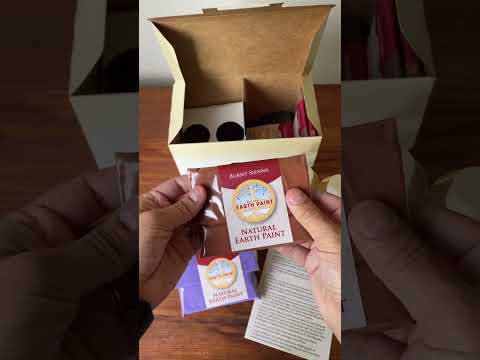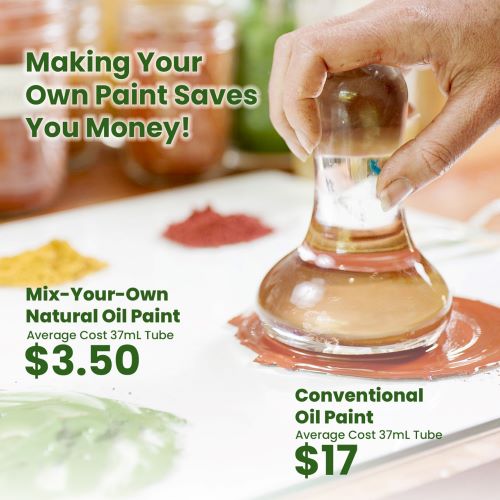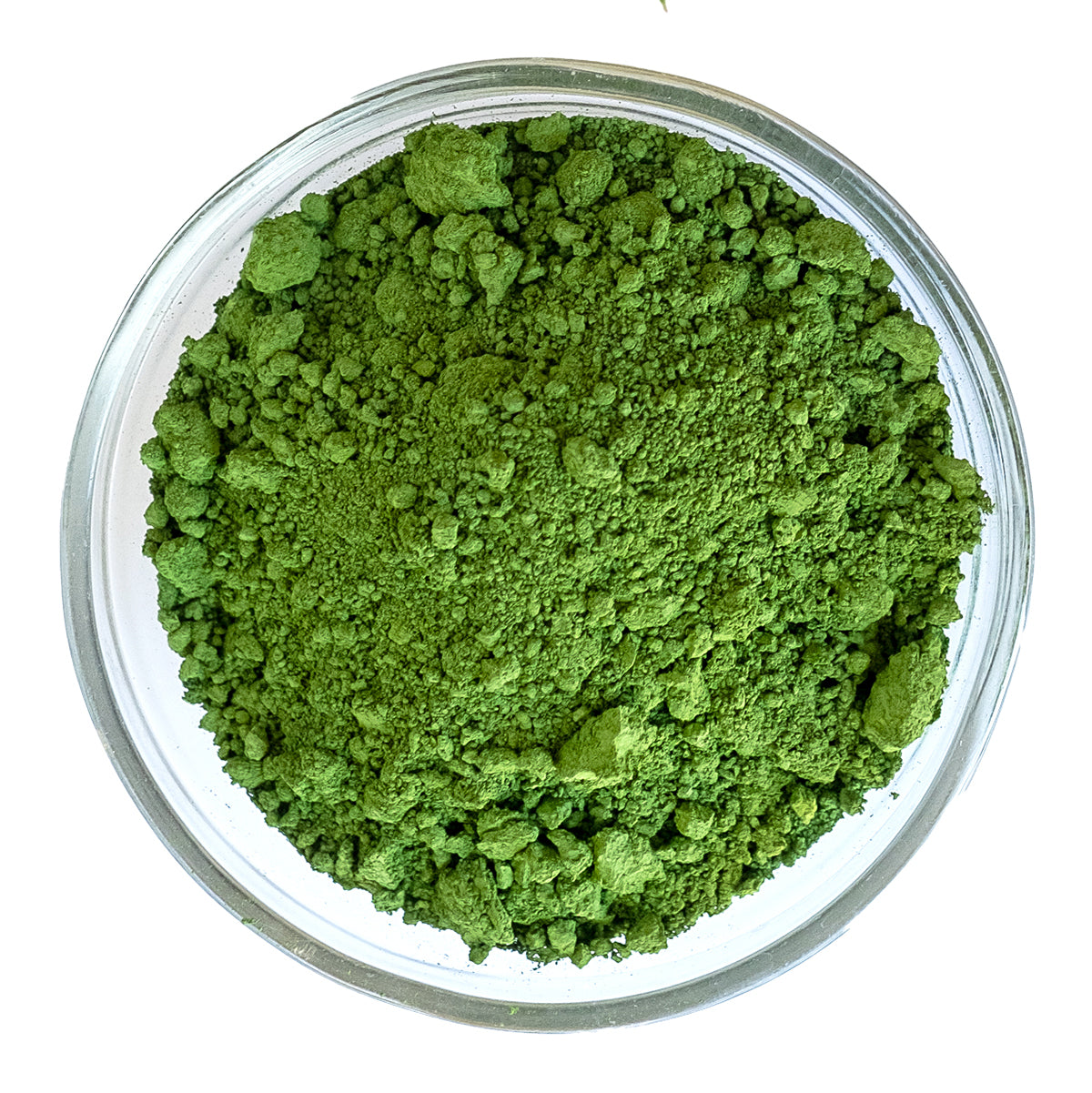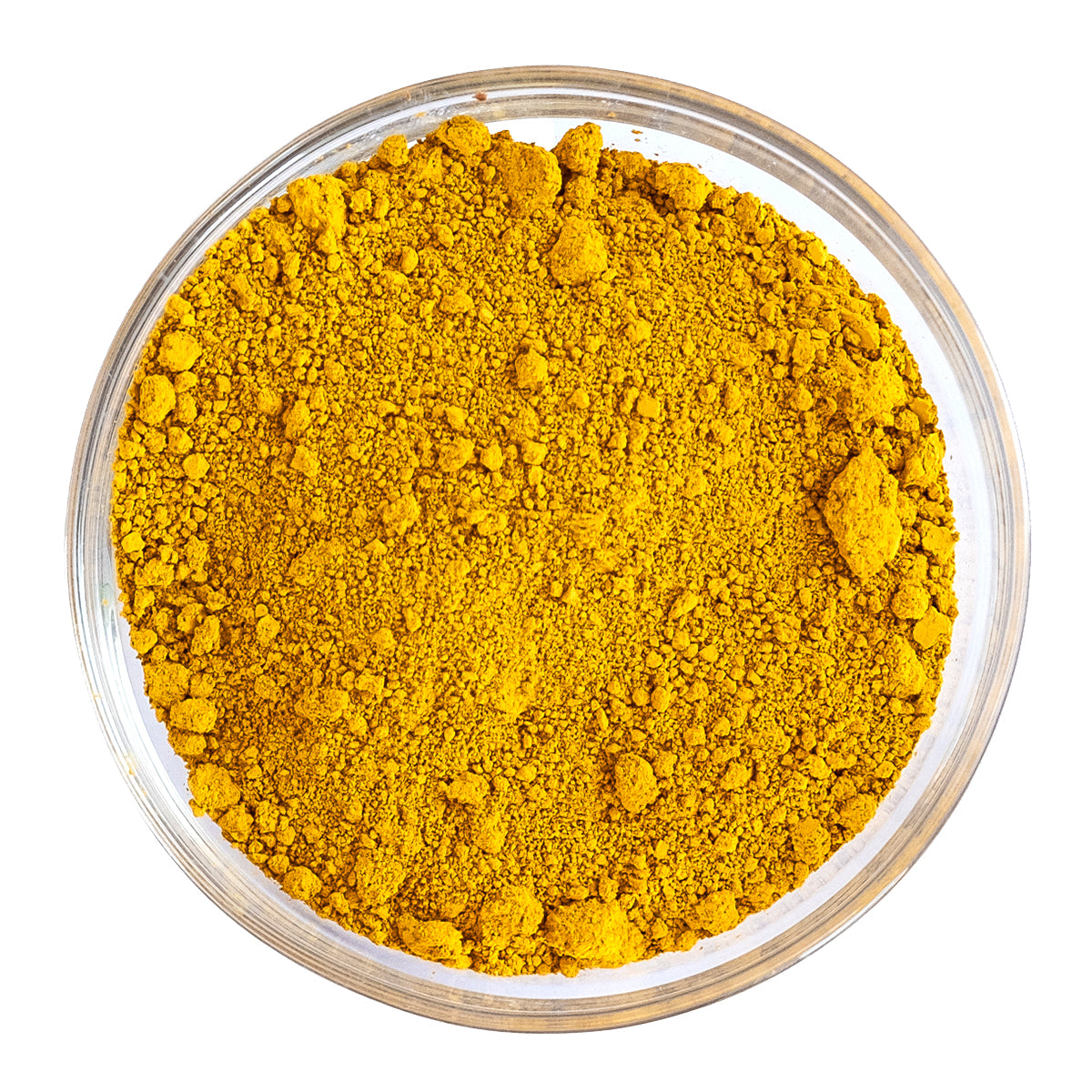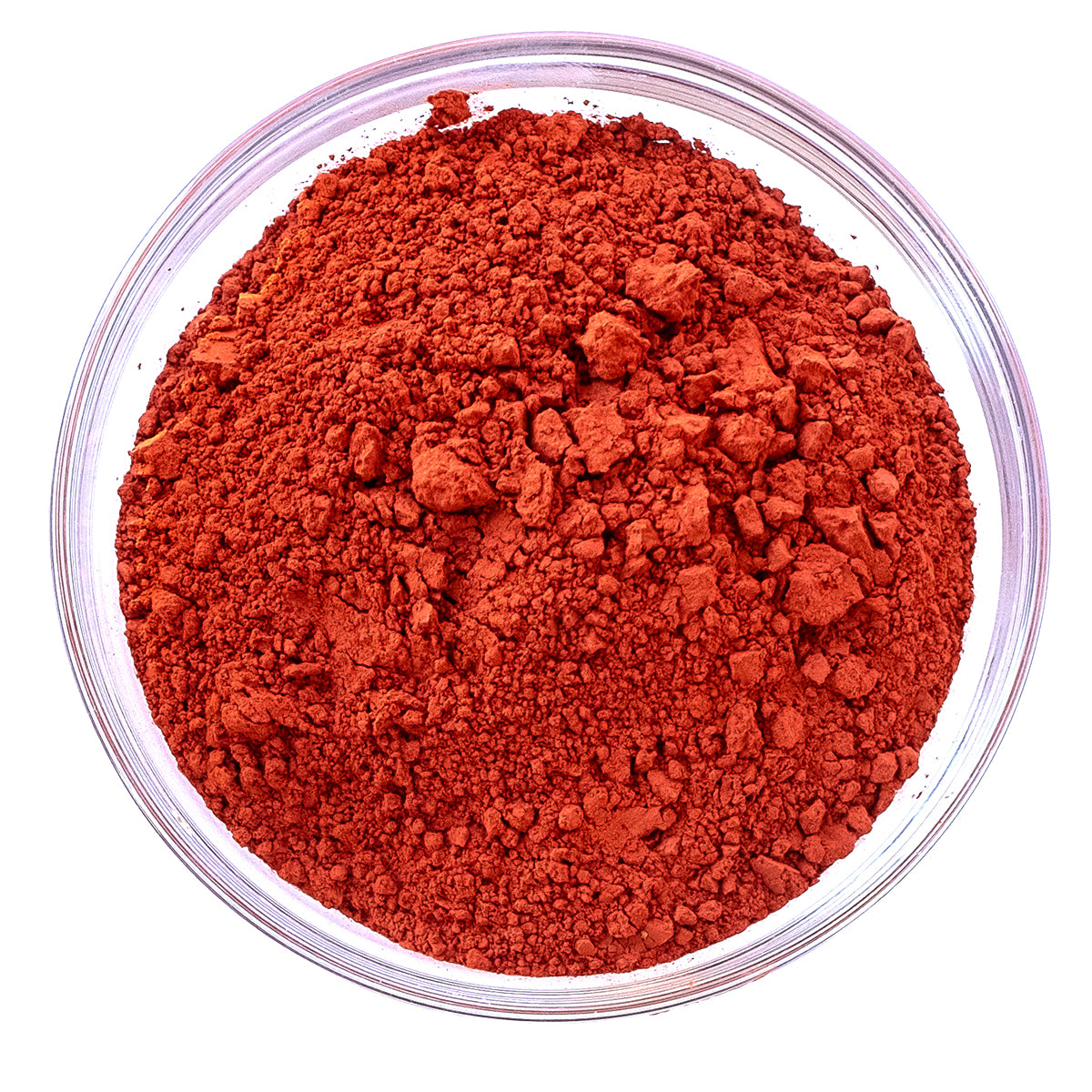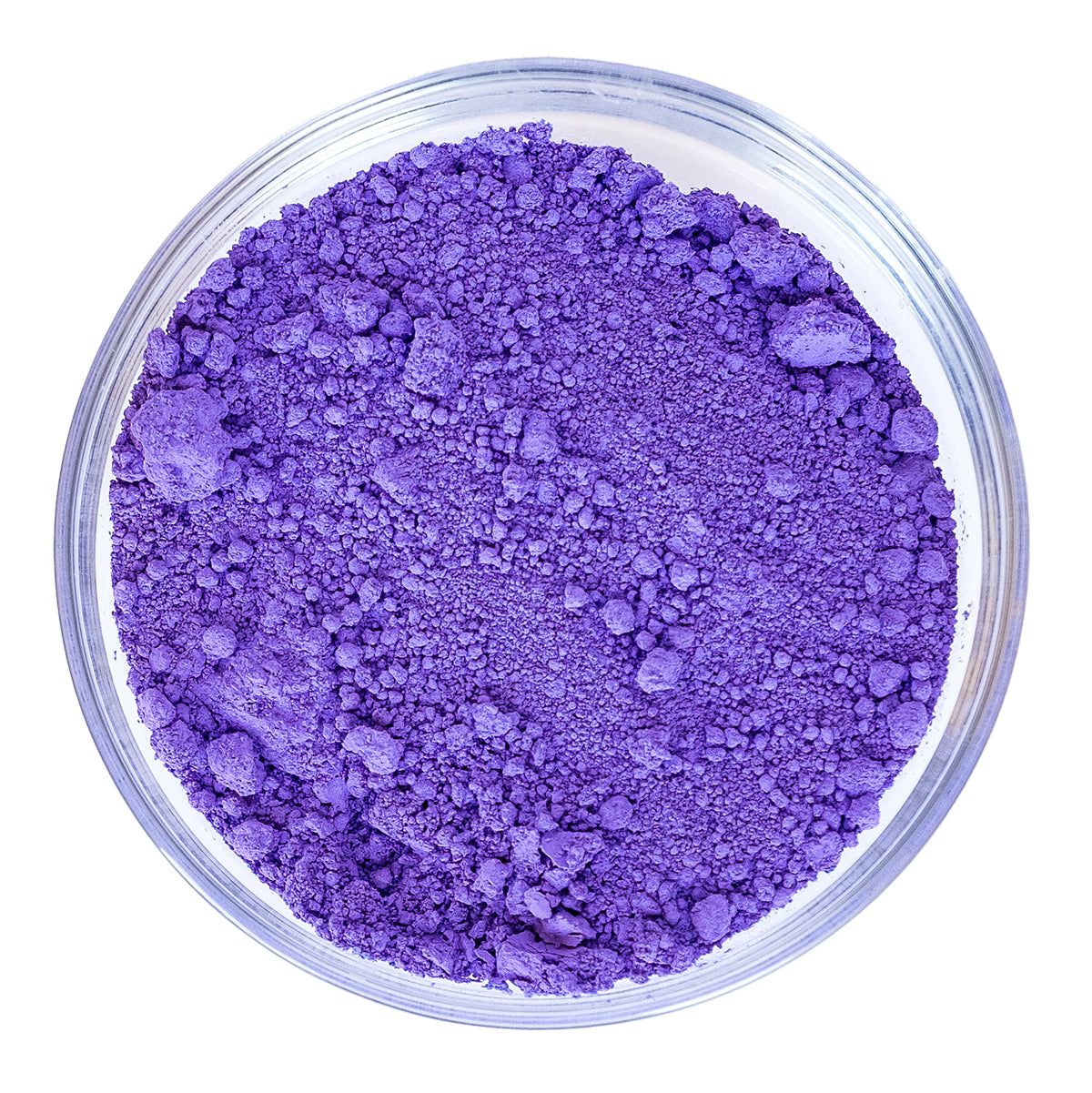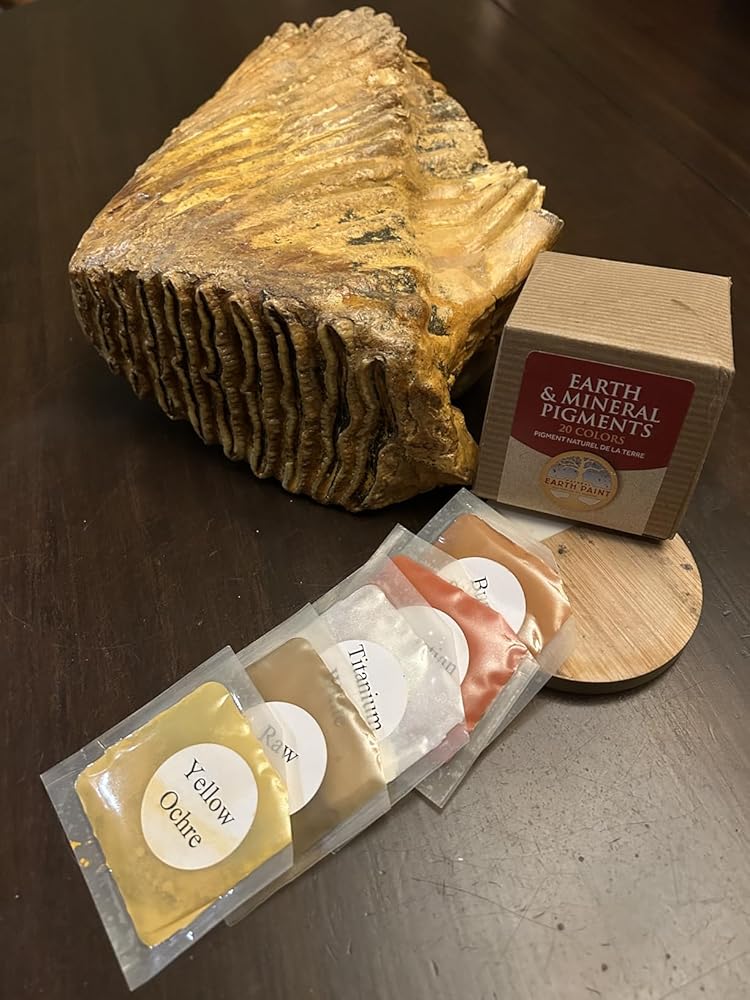Why should I mix my own paint when I can buy paint pre-made?Mixing your own oil paint using completely non-toxic and natural oil and earth pigments is the best and safest way to make paint! We believe that the extra step of mixing your own paint is well worth the peace of mind of knowing you are using the safest and most sustainable paint on the market. Most pre-made paints on the market contain a variety of toxic chemical stabilizers, petrochemicals, fillers, and preservatives. Natural pigments provide an unsurpassed luminosity, depth of color, UV resistance, humidity resistance, and archival qualities. Conventional paints are the "fast food" approach that the mainstream paint industry thinks consumers demand, but we believe our customers deserve better.
How much pigment do I need to add? What is the ratio of pigment to oil when mixing oil paint? Unfortunately, every color has a completely different oil: pigment ratio because each color absorbs moisture differently and each pigment has different molecular structure, size, density, drying time, etc. You simply pour the pigment onto the palette and add small amounts of oil at a time and mix until it makes a smooth, thick paste. You can use a glass dropper to add drops at a time. Use Eco-Solve in place of toxic solvents to thin paint.
How long does the oil paint last after mixed and how should I store it?
The oil paints in the Complete Eco-friendly Oil Paint Kit usually stay wet on the palette for up to a week, but any extra paint can be stored in aluminum foil, air-tight glass jars, or aluminum tubes. For more information on storing oil paints, visit our blog. You can store them in glass jars with screw on / air tight lids or even better, store them in aluminum tubes.
Do I need to use a muller?
The muller isn't absolutely necessary. You can just use the palette knife to mix paint if you mix thoroughly by pressing and swirling repeatedly. The purpose for the glass muller is to make 100% sure that every particle of pigment is completely coated in oil. Because if there are any air pockets in the paint, then the paint might crack after a long period of time.
Why don’t you offer pre-mixed oil paint for sale? To manufacture oil paint in tubes, you need to guarantee a really long shelf life for the tubes to sit in stores for years. To do that you need to add toxic additives, preservatives and stabilizers to make sure the paint never separates and is completely preserved and stable. We promote mixing the paint, yourself to avoid having anything else in the paint to detract from the pure luminosity of just pigment and oil, like the Old Masters used, and also to avoid toxins. It does take time and another step though so you have to weigh the pros and cons for yourself.
How do I clean up the oil paint?
Large amounts of oil or oil paint should be disposed of according to your city’s local ordinances.
To wash oil paint from your hands and body:
Option 1: Use Pinerite Natural Hand Cleaner.
Option 2: Rub a small amount of oil into the paint on your skin, then wipe off with a rag and wash with soap and water.
To clean brushes:
Option 1: Pour a small amount of Eco-Solve* into a glass jar (just enough to cover the brush bristles if you dunk your brush), then swirl your brush until the majority of paint comes off. Finish washing brushes with soap and water.
Option 2: Simply use pure oil, like walnut, to thin your paint and clean your brushes
Option 3: Use Murphy’s Oil Soap from any hardware store.
*You can re-use Eco-solve nearly indefinitely just like regular solvent. After cleaning your brushes, let it sit in a covered glass jar for a few days to a week and then the paint sediment will settle to the bottom. You can carefully pour the "clean" eco-solve that is on top into another container, then the paint sludge left in the jar can be wiped out and disposed of in the trash or washed down the drain if the paint is non-toxic and safe for waterways.
How long does the oil paint take to dry to the touch?
On average, it takes about 4-7 days for oil paint to dry, but it may take shorter or longer depending on your surrounding conditions and the thickness of paint layers. To speed drying time, add some Sun thickened Linseed Oil.
NOTE: There isn’t any water in oil paint to evaporate (unlike acrylics which dry by evaporation) so traditional oil paints dry by oxidization, which occurs when the oil reacts with oxygen in the air and hardens. This is why you shouldn’t varnish an oil painting until it is fully cured, as putting varnish on a partially dry (to the touch) painting won’t allow air through the varnish layer and will stop the painting from drying properly and fully.
Who would benefit from our Oil Paint?
- Oil painters who are sensitive to or simply want to avoid exposure to solvents (white spirit, mineral spirits, turpentine), heavy metal toxins, petroleum-based pigments, and toxic additives.
- Students and teachers in schools and colleges where the practice of oil painting is prohibited because of the toxic solvents and the heavy metal toxins notorious in conventional paints such as lead white or any of the cadmium or cobalt colors.
- Artists working in shared studio space where the buildup of fumes could lead to an acutely dangerous concentration of vapors.
- Artists who work within a small home environment and wish to reduce the fumes of oil painting.
- Artists who want more vibrancy and luminosity in their paintings without fillers and preservatives to dull the color and a supremely archival and lightfast painting.
- Artists on-the-go who frequently travel by air and need a painting option that’s easy and safe to carry with them and have no hazard restrictions.
- Earth-conscious artists who want to protect the planet, take control of their materials, or mix their own paints like the Old Masters of the Renaissance.
What age group is the oil paint for?
Teenagers and up
Does your Titanium White paint yellow over time?
If your white paint is yellowing, it’s actually the oil that’s turning it yellow, not the pigment itself. Some painters mix Liquid Gold Hempseed Oil or poppyseed oil (since it is the clearest of all oils) with their white pigments only instead of walnut or linseed oil, to stop it from yellowing. Many artists do that for just white. We carry walnut oil because it is less yellowing than linseed oil although linseed oil dries faster which some people prefer.
We sell walnut oil because it is less yellowing than linseed oil although there will be slight yellowing over time.



